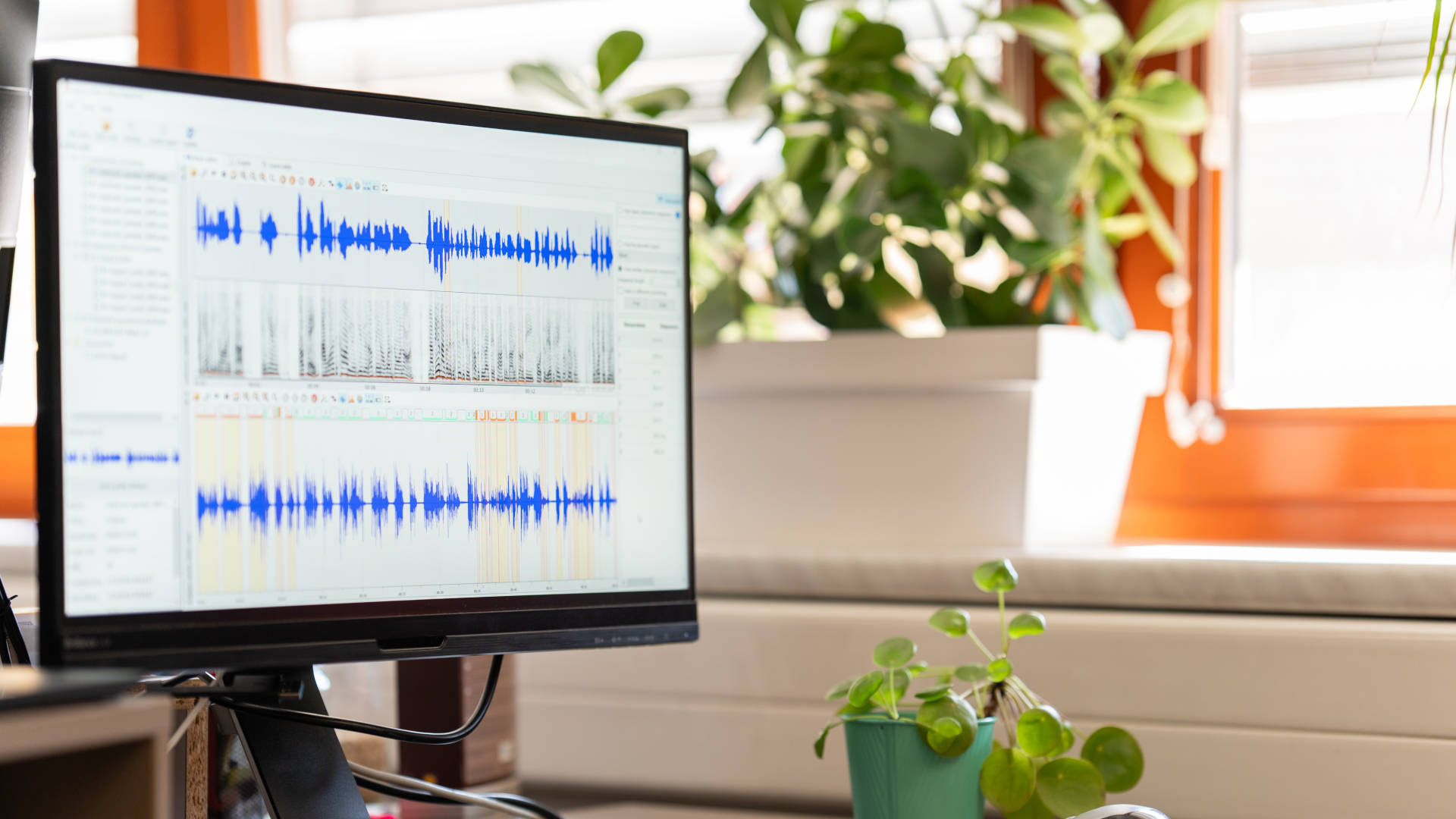Preventing Identity Theft with Voice Biometrics

November 5, 2021
By Roxanne Jester in Blog
Voice technologies have plenty of uses. In our increasingly digital world, we use our voice to ask questions from virtual assistants like Amazon’s Alexa, or command Google’s Duplex to book our appointments and reservations. It’s unsurprising that the industry is growing fast. The global voice recognition market is expected to grow from $10.7 billion in 2020 to $27.16 billion by 2026. The trend will continue upwards, as the technology itself will advance through the use of artificial intelligence (AI).
Voice biometrics is a segment of the industry which can address many businesses’ growing concern for safety, and the need for strong verification processes. A large number of banks, in particular, are adopting voice-based authentication solutions for phone banking transactions. It’s likely that other fields will implement voice biometrics to fight fraud and identity theft as well.
What is Voice Biometrics?
Before we discuss how voice biometrics can prevent identity theft, it’s important to understand how the technology works. Voice biometrics is the science of using a person’s voice as a uniquely identifiable biological characteristic to authenticate them. While biometrics such as facial recognition, fingerprints, or even behaviors like hand movements can also be used to identify us, more than 70 body parts contribute to how we produce speech—so it's very unique.
Microphones are used with a voiceprint AI algorithm, which is powered by deep neural networks, to analyze a wide range of parameters based on an individual’s voice. This can include hundreds of different characteristics such as vocal pitch, intensity, cadence, accent, tone, pacing, mouth shape, vocal tract, and sound fluctuations, which will be saved as a voiceprint and compared against the existing database of voiceprints. In short, the technology tries to find what makes your voice yours; it also aims to spot anomalies created by vocoders, synthetic speech, or sampled voices.
How Voice Biometrics Can Prevent Fraud
Now, identity theft is one of the most common problems for businesses, especially for financial institutions like banks. Based on cybercrime rates from around the world, cyberattacks rank first among all man-made risks worldwide. Moreover, cybercrimes like identity theft and hacking will cost the world $11.4 million each minute in 2021.
To mitigate this problem, a voice biometric system captures a speech sample. Then, it creates a voiceprint from the sample to compare it against the voiceprint saved during the enrollment process. A strong match means it’s the same person. This provides a significant security advantage over authentication methods based on something you know—a password, a PIN, or an answer to a security question—or something you have, like your mobile phone. After all, replicating voices is much more difficult than impersonating someone through stolen or guessed information.
A voice biometric system will also flag suspicious calls and send an alert as soon as it happens. This allows businesses to get a copy of what the criminal’s voice sounds like too. Repeat offenders can be flagged and identified, even if they’re impersonating different victims. Overall, incorporating voice biometrics can reduce customer frustration with cumbersome login processes and improve the experience.
Of course, institutions shouldn’t rely solely on a single biometric marker. It’s necessary to beef up security with multiple policies to protect against fraud or identity theft, especially if an organization has a lot of moving parts. Industries should team up with experts to create a holistic ecosystem with checks and measures in place. To give the next generation a deeper understanding and insight on safeguarding businesses, today’s criminal justice training covers criminology theory, cybercrime investigations, and advanced psychology, so they’re well-equipped to understand cases like these. The unique perspective of these professionals can be invaluable in planning your overall security strategy, and they can advise you on how to strengthen your verification procedures.
Using Voice Biometrics for Security
As mentioned earlier, financial institutions are big adopters of voiceprint technology for their multi-factor authentication protocols. Other businesses can benefit from voice biometrics as well.
Contact centers can use voice recognition to verify and authenticate callers—biometrics saves time and effort for both customers and agents, as it eliminates the need for tedious security questions at the beginning of each interaction. Hospitals and clinics can likewise better protect patient health records, because voice biometrics can add a layer of security against unauthorized access. Voice technology can also be useful for workplace management—especially in organizations with a large, distributed workforce — allowing it to serve as an alternative to outdated badging systems.
In our article on ‘5 Popular Types of Biometric Authentication’, we considered the advantages of voice biometrics. Aside from saving time and being difficult to falsify, it’s a method that’s familiar to users. Even older people who are unfamiliar with technology can be comfortable with it, because voice biometrics offers a natural way of communication and verification between people.
Phonexia Speaker Identification is a state-of-the-art speaker recognition technology that can solve any challenge related to speaker verification. Regardless of language or spoken words, it enables lightning-fast recognition results by leveraging artificial intelligence technology.
Contact us today to learn more about the Phonexia Speaker Identification.


